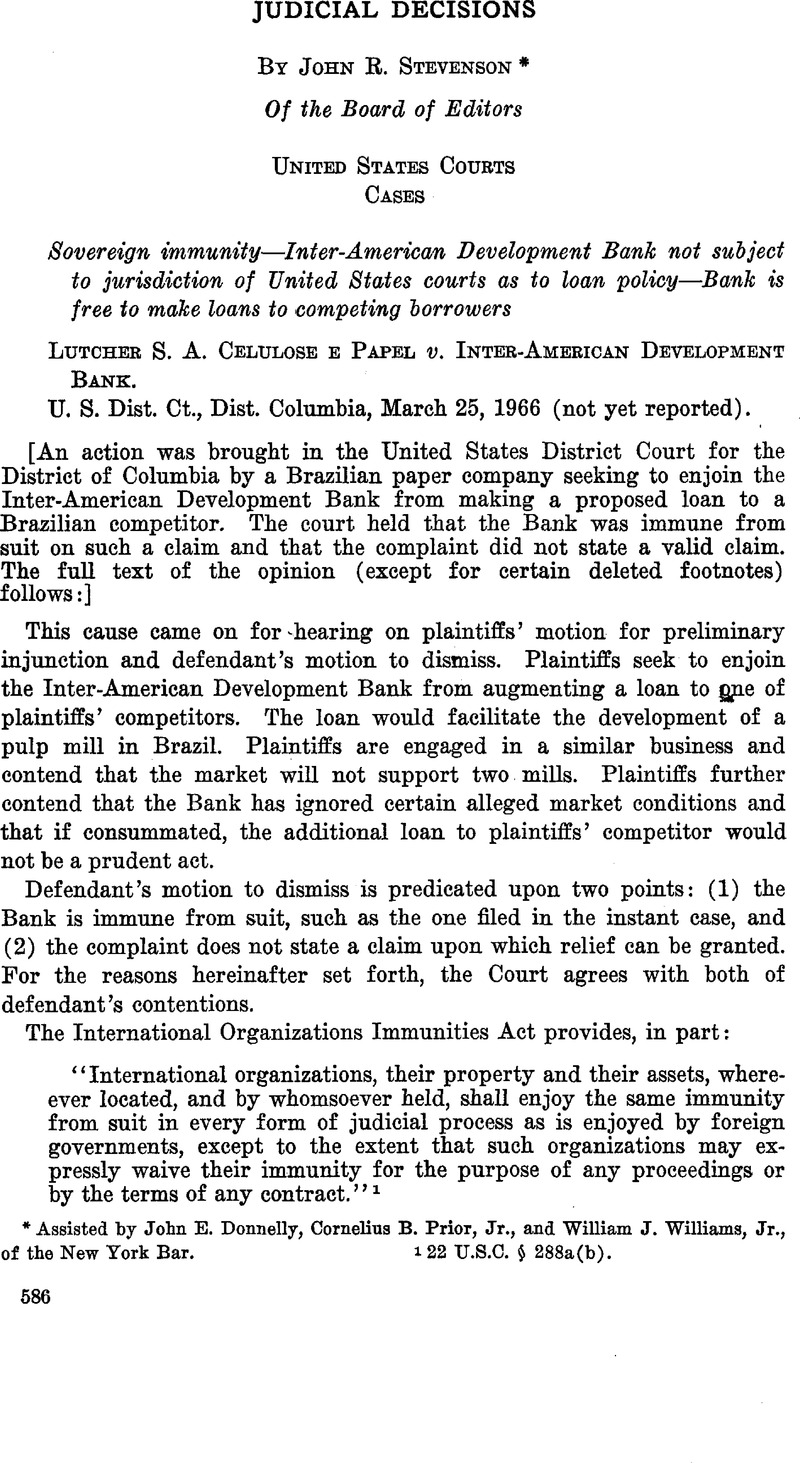No CrossRef data available.
Article contents
United States Court Cases
Published online by Cambridge University Press: 28 March 2017
Abstract

Keywords
- Type
- Judicial Decisions
- Information
- Copyright
- Copyright © American Society of International Law 1966
References
1 22 TJ.S.C. § 288a(b).
2 Executive Order 10873, 3 C.FB. 404 (1959-1963 Comp.).
3 National City Bank v. Republic of China, 348 TJ. S. 356, 358 (1955).
4 The Schooner Exchange v. M'Faddon, 11 TJ. 8. (7 Cranch) 116 (1812).
5 United States v. Curtiss-Wright Export Corp., 299 IT. S. 304 (1936).
1 In this Circuit a copending patent under 35 U.S.C. § 102(e) is considered part of the “prior art” under 35 U.S.C. § 103, so that no distinction is made, with regard to the effective reference date between an anticipation rejection under 35 U.S.C. § 102(e) and an obviousness rejection under 35 U.S.C. § 103. The copending patent is effective as a reference as of its application filing date for everything disclosed, whether claimed or not, in the originally filed application, to the extent that such original disclosure is not cancelled from the application during prosecution and thus becomes part of the disclosure in the patent ultimately granted. Hazeltine Research, Inc. v. Ladd, D.C., 226 F. Supp. 459, affirmed, 340 F. 2d 786 (C.A.D.C). It should be noted, however, that both parties and the Court agree that the rejection presently under consideration is solely of the 35 U.S.C. § 102(e) type.
2 Actual reduction to practice according to the facts of this case, but this Court sees no difference whether the reduction to practice is actual or constructive. A date of invention is a date of invention, and may be established by proof of either actual or constructive reduction to practice.
3 The Presidential Proclamation and the Lisbon text of the Convention for the Protection of Industrial Property are printed in the February 13, 1962 Patent Office Official Gazette at 775 O. G. 321.




